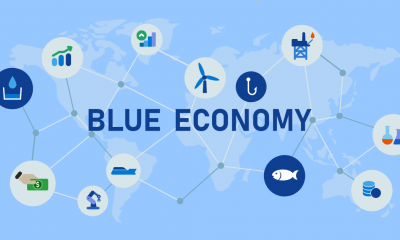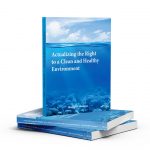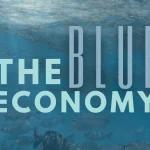By Hon. Prof. Kariuki Muigua, OGW, PhD, C.Arb, FCIArb is a Professor of Environmental Law and Dispute Resolution at the University of Nairobi, Member of Permanent Court of Arbitration, Leading Environmental Law Scholar, Respected Sustainable Development Policy Advisor, Top Natural Resources Lawyer, Highly-Regarded Dispute Resolution Expert and Awardee of the Order of Grand Warrior (OGW) of Kenya by H.E. the President of Republic of Kenya. He is the Academic Champion of ADR 2024, the African ADR Practitioner of the Year 2022, the African Arbitrator of the Year 2022, ADR Practitioner of the Year in Kenya 2021, CIArb (Kenya) Lifetime Achievement Award 2021 and ADR Publisher of the Year 2021 and Author of the Kenya’s First ESG Book: Embracing Environmental Social and Governance (ESG) tenets for Sustainable Development” (Glenwood, Nairobi, July 2023) and Kenya’s First Two Climate Change Law Book: Combating Climate Change for Sustainability (Glenwood, Nairobi, October 2023), Achieving Climate Justice for Development (Glenwood, Nairobi, October 2023), Promoting Rule of Law for Sustainable Development (Glenwood, Nairobi, January 2024) and Actualizing the Right to a Clean and Healthy Environment (Glenwood, Nairobi, January 2024)*
Environmental pollution is one of the major global challenges facing humanity and a key cause of morbidity and mortality. It is one of the triple planetary crisis alongside climate change and biodiversity loss. Environmental pollution occurs in various forms including water pollution; land pollution; noise pollution; and air pollution. It has been identified as a key threat to not only the Sustainable Development agenda but also to the very existence of the humankind.
Environmental pollution has been defined as ‘the contamination of the physical and biological components of the earth/atmosphere system to such an extent that normal environmental processes are adversely affected’. Environmental Pollution has also been defined as ‘any discharge of material or energy into water, land, or air that causes or may cause acute (short-term) or chronic (long-term) detriment to the Earth’s ecological balance or that lowers the quality of life’. Pollutants strain ecosystems and may reduce or eliminate populations of sensitive species. Contamination may reverberate along the food chain causing mass destruction. An example is the use of herbicides and pesticides in agricultural land.
Some of these chemicals seep into rivers that flow through protected areas, causing poisoning of wildlife which drinks from the river. Another problem is the dumping of solid waste into rivers that flow through protected areas. Solid waste management which is constitutionally delegated to county governments has been a big problem across the country. Pollution has been attributed to many factors which include but not limited to waste by-products emanating from industrialization of our society, the introduction of motorized vehicles, and the explosion of the human population, leading to an exponential growth in the production of goods and services. This is mainly because of the indiscriminate discharge of untreated industrial and domestic wastes into waterways, the spewing of thousands of tons of particulates and airborne gases into the atmosphere, the “throwaway” attitude toward solid wastes, and the use of newly developed chemicals without considering potential consequences has resulted in a lot of environmental disasters throughout the world.
A major cause of pollution in coastal ecosystems is construction of hotels and other facilities in areas that are not on the sewerage lines. Beach resorts and some households in Mombasa have constructed onsite sewage management systems such as septic tanks and soakage pits. However, these often cause groundwater contamination which in turn causes considerable coral reef dieback and threatens the proliferation of marine life. The Wildlife Conservation and Management Act, 2013 deals with pollution by making it an offence to pollute wildlife habitats. The Act applies the polluter pays principle and environmental restoration alongside payment of hefty fines for persons convicted of polluting wildlife habitats.
EMCA has very substantive provisions on pollution of the environment and gives deterrent penalties for violation of those provisions. The courts have further upheld the provisions of EMCA relating to pollution of wildlife resources and one such incidence was in the case of Kwanza Estates LTD v Kenya Wildlife Service, where the court issued an injunction stopping the construction of a public toilet on the beachfront without approval from NEMA holding that the actions had potentially negative effects on the environment. Environmental pollution is a threat to not only the sustainable development agenda but also to the very existence of the humankind. Environmental law thus seeks to control the use of one’s property and human behaviour so as to permit a habitable environment and to minimize adverse ecological effects.
The most common types of pollution perceived in our environment include: water pollution; land pollution; noise pollution; and air pollution. It is estimated that about 30 to 50 per cent of nitrogen applied to soils leaches into rivers and the air, suffocating aquatic life, worsening climate change and shortening lives through contamination. Nutrient pollution, or an excess of nutrients such as nitrogen and phosphorus in the water which enter the rivers as runoff from farmlands and residential areas, can lead to a host of health and environmental problems. Nutrient pollution is attributed to fertilizer, animal manure, sewage treatment plant discharge, detergents, storm water runoff, cars and power plants, failing septic tanks and pet waste.
Nutrient pollution of rivers is considered to be one of the most widespread human impacts on water resources. This is especially more serious in agriculture based economies such as Kenya where most people in rural areas engage in farming using modern chemicals that end up in water bodies. This not only pollutes the water but have a residue effect on the soil thus polluting the soil. Apart from farming chemicals, Sewerage water, industrial wastes and disposals are also sources of water pollution. Target 6.3 of the Sustainable Development Goals (SDGs) requires that states should ensure that “by 2030, they improve water quality by reducing pollution, eliminating dumping and minimizing release of hazardous chemicals and materials, halving the proportion of untreated wastewater and substantially increasing recycling and safe reuse globally.
Some scholars have defined the term noise to describe sounds that are disagreeable or unpleasant produced by acoustic waves of random intensities and frequencies. Noise from industry, traffic, homes and recreation can cause annoyance, disturb sleep and effects health. Thus, sound is considered to be a potential serious pollutant and threat to the environmental health. Air pollution can be defined as “the introduction of chemicals, particulate matter, or biological materials that cause harm or discomfort to humans or other living organisms, or cause damage to the natural environment or built environment, into the atmosphere”. Air pollution is now considered to be a significant public health problem, responsible for a growing range of health effects in many regions of the world.
Indeed, it has been documented that air pollution has overtaken poor sanitation and a lack of drinking water to become the main environmental cause of premature death. Nitrogen oxides, Sulphur dioxide, Carbon Monoxide, Ammonia and Ozone are considered to be the major air pollutants. The United Nations observes that most recorded air pollution-linked deaths occur in developing countries, where laws are weak or not applied, vehicle emission standards are less stringent and coal power stations more prevalent. Kenya’s air condition in most major cities and towns has been rated as some of the most polluted in the world. This is mainly attributed to the unsustainable policies in sectors such as transport, energy, waste management and industry.
It has been argued that while other parts of the world, particularly the developed nations, also have the problem of air pollution mainly caused by burning of hydrocarbons for transport that can be addressed by tackling fuel usage through electric vehicles, and car-free zones, African cities have entirely different problems; pollution is mainly due to the burning of rubbish, cooking with inefficient solid fuel stoves, millions of small diesel electricity generators, cars which have had their catalytic converters removed and petrochemical plants, all pushing pollutants into the air over the cities. According to the World Health Organization, approximately 19,000 people die prematurely in Kenya annually because of air pollution. This is mainly attributed to PM 2.5 annual exposure, which, according to the United Nations, are 70 per cent over the safe level in Nairobi. Kenya has had its own share of air and noise pollution despite the existence of laws meant to curb the same.
*This is an extract from Kenya’s First Clean and Healthy Environment Book: Actualizing the Right to a Clean and Healthy Environment (Glenwood, Nairobi, January 2024) by Hon. Prof. Kariuki Muigua, OGW, PhD, Professor of Environmental Law and Dispute Resolution, Senior Advocate of Kenya, Chartered Arbitrator, Kenya’s ADR Practitioner of the Year 2021 (Nairobi Legal Awards), ADR Lifetime Achievement Award 2021 (CIArb Kenya), African Arbitrator of the Year 2022, Africa ADR Practitioner of the Year 2022, Member of National Environment Tribunal (NET) Emeritus (2017 to 2023) and Member of Permanent Court of Arbitration nominated by Republic of Kenya and Academic Champion of ADR 2024. Prof. Kariuki Muigua is a foremost Environmental Law and Natural Resources Lawyer and Scholar, Sustainable Development Advocate and Conflict Management Expert in Kenya. Prof. Kariuki Muigua teaches Environmental Law and Dispute resolution at the University of Nairobi School of Law, The Center for Advanced Studies in Environmental Law and Policy (CASELAP) and Wangari Maathai Institute for Peace and Environmental Studies. He has published numerous books and articles on Environmental Law, Environmental Justice Conflict Management, Alternative Dispute Resolution and Sustainable Development. Prof. Muigua is also a Chartered Arbitrator, an Accredited Mediator, the Managing Partner of Kariuki Muigua & Co. Advocates and Africa Trustee Emeritus of the Chartered Institute of Arbitrators 2019-2022. Prof. Muigua is a 2023 recipient of President of the Republic of Kenya Order of Grand Warrior (OGW) Award for his service to the Nation as a Distinguished Expert, Academic and Scholar in Dispute Resolution and recognized among the top 5 leading lawyers and dispute resolution experts in Band 1 in Kenya by the Chambers Global Guide 2024 and was listed in the Inaugural THE LAWYER AFRICA Litigation Hall of Fame 2023 as one of the Top 50 Most Distinguished Litigation Lawyers in Kenya and the Top Arbitrator in Kenya in 2023.
References
Climate & Clean Air Coalition., ‘UN Declares Healthy Environment – Including Clean Air – A Human Right’ Available at https://www.ccacoalition.org/news/un-declares-healthy-environment-includingclean-air-human-right (Accessed on 12/03/2024).
Coker, A.O,. “Environmental Pollution: Types, Causes, Impacts and Management for the Health and SocioEconomic Well-Being of Nigeria,” p.1. Available https://pdfs.semanticscholar.org/8e7b/a9595bab30d7ea87715533353c53f7452811.pdf (Accessed at on 11/03/2024).
Constitution of Kenya, 2010., Government Printer, Nairobi.
Environmental Management and Co-Ordination Act, No. 8 of 1999, Government Printer, Nairobi
Environmental Management and Co-ordination Act., The Environmental Management and Coordination (Air Quality) Regulations, 2014, Legal Notice No. 34.
Khasanova. S., & Alieva. E., ‘Environmental Pollution: Types, Causes and Consequences’ Available at http://dx.doi.org/10.1051/bioconf/20236307014 (Accessed on 11/03/2024).
Khasanova. S., & Alieva. E., ‘Environmental Pollution: Types, Causes and Consequences’ Op Cit 10 United Nations Climate Change., ‘What is the Triple Planetary Crisis?’ Available at https://unfccc.int/news/what-is-the-triple-planetarycrisis#:~:text=The%20triple%20planetary%20crisis%20refers,change%2C%20 pollution%20and%20biodive rsity%20loss. (Accessed on 11/03/2024).
Muigua. K., ‘Enforcing the Right to Clean and Healthy Environment in Kenya through the Polluter Pays principle’ Available at https://kmco.co.ke/wp-content/uploads/2023/02/Enforcing-the-Right-to-Clean- and-Healthy-Environment-in-Kenya-Through-the-Polluter-Pays-principle-Kariuki-Muigua-February2023.pdf (Accessed on 13/03/2024).
Muigua. K., ‘Realizing the Right to a Clean, Healthy and Sustainable Environment’ Available at https://kmco.co.ke/wp-content/uploads/2023/06/Realizing-the-Right-to-a-Clean-Healthy-andSustainable-Environment.pdf (Accessed on 13/03/2024).
Muigua. K., ‘Recognising a Human Right to Safe, Healthy and Sustainable Environment.’ Available at http://kmco.co.ke/wp-content/uploads/2021/04/Recognising-a-Human-Right-to-Safe-Healthyand Sustainable-Environment-Kariuki-Muigua-1st-April-2021.pdf (Accessed on 13/03/2024).
Muigua. K., ‘Safeguarding the Environment through Effective Pollution Control in Kenya’ Available at https://kmco.co.ke/wp-content/uploads/2019/09/Safeguarding-the-Environment-through-EffectivePollution-Control-in-Kenya-Kariuki-Muigua-28th-SEPT-2019.pdf (Accessed on 11/03/2024).
Muigua. K., ‘The Role of Courts in Safeguarding Environmental Rights in Kenya: A Critical Appraisal.’ Available at http://kmco.co.ke/wp-content/uploads/2019/01/The-Role-of-Courts-inSafeguarding Environmental-Rights-in-Kenya-A-Critical-Appraisal-Kariuki-Muigua-17th-January-20191.pdf (Accessed on 13/03/2024).
Peter K. Waweru v Republic, Misc. Civil Application No. 118 of 2004, (2006) eKLR.
Sharma, S. B., Jain, S., Khirwadkar, P., & Kulkarni, S., ‘The Effects of Air Pollution on the Environment and Human Health,’ Indian Journal of Research in Pharmacy and Biotechnology, Volume 1, No. 3 (2013) 22 World Health Organization., ‘Air Pollution’ Available at https://www.who.int/health-topics/airpollution #tab=tab_1 (Accessed on 12/03/2024).
Ullah, S., “A sociological study of environmental pollution and its effects on the public health Faisalabad city,” International Journal of Education and Research, Vol. 1 No. 6 June 2013, p.2.
United Nations Climate Change., ‘Air Quality Sinks as Climate Change Accelerates’ Available at https://unfccc.int/news/air-quality-sinks-as-climate-changeaccelerates#:~:text=%E2%80%9CAs%20the %20globe%20warms%2C%20wildfires,says%20WMO%20Secr etary%2DGeneral%20Prof. (Accessed on 12/03/2024).
United Nations Environment Progaramme., ‘Pollution and Health’ Available at https://www.unep.org/topics/chemicals-and-pollution-action/pollution-and-health (Accessed on 11/03/2024).
United Nations Environment Programme., ‘About Air’ Available at https://www.unep.org/exploretopics/ air/about-air (Accessed on 12/03/2024).
United Nations Environment Programme., ‘Advancing the Right to a Healthy Environment’ Available at https://www.unep.org/explore-topics/environmental-rights-and-governance/what-we-do/advancing right healthyenvironment#:~:text=Over%20150%20countries%20have%20binding,change %2C%20bio diversity %20loss%20and%20pollution (Accessed on 12/03/2024).
United Nations Environment Programme., ‘Air Pollution Hurts the Poorest Most’ Available at https://www.unep.org/news-and-stories/story/air-pollution-hurts-poorest-most 12/03/2024).
United Nations Environment Programme., ‘Five Cities Tackling Air Pollution’ Available at https://www.unep.org/news-and-stories/story/five-cities-tackling-air-pollution (Accessed 12/03/2024).
United Nations Environment Programme., ‘How is Air Quality Measured?’ Available at https://www.unep.org/news-and-stories/story/how-air-qualitymeasured#:~:text=Some%20 use%20lasers%20to%20scan,nitrogen%20dioxide%20and%20sulfur%20dioxi de. (Accessed on 13/03/2024).
United Nations Environment Programme., ‘Pollution Action Note – Data you Need to Know’ Available at https://www.unep.org/interactives/air-pollution-note/ (Accessed on 12/03/2024).
United Nations Environment Programme., ‘Pollution’ Available at https://leap.unep.org/en/knowledge/glossary/pollution#:~:text=The%20indirect%20or%20direct%20al teration,welfare%20of%20any%20living%20species.%20( (Accessed on 11/03/2024).
United Nations General Assembly (UNGA)., ‘The Human Right to a Clean, Healthy and Sustainable Environment.’ UNGA Resolution ‘A/76/L.75.’
United Nations General Assembly, ‘United Nations Framework Convention on Climate Change’ Resolution / Adopted by the General Assembly, 20 January 1994, A/RES/48/189.
United Nations General Assembly., ‘Report of the United Nations Conference on Environment and Development: Rio Declaration on Environment and Development.’ A/CONF. 151/26 (Vol.1).
United Nations, International Covenant on Economic, Social and Cultural Rights, Adopted and opened for signature, ratification and accession by General Assembly resolution 2200A (XXI) of 16 December 1966, entry into force 3 January 1976, in accordance with article 27.
World Bank Group., ‘Pollution’ Available at https://www.worldbank.org/en/topic/pollution (Accessed on 11/03/2024).
World Bank Group., ‘What You Need to Know About Climate Change and Air Pollution’ Available at https://www.worldbank.org/en/news/feature/2022/09/01/what-you-need-to-know-about-climatechange-and-air-pollution (Accessed on 13/03/2024).
World Health Organization., ‘Global Air Quality Guidelines’ Available at https://iris.who.int/bitstream/ handle/10665/345329/9789240034228-eng.pdf?sequence=1 (Accessed on 12/03/2024).
Zimmer K, ‘The Human Right That Benefits Nature’ Available at https://www.bbc.com/future/article/ 20210316- how-the-human-right-to-a-healthy-environment-helpsnature (Accessed on 13/03/2024).

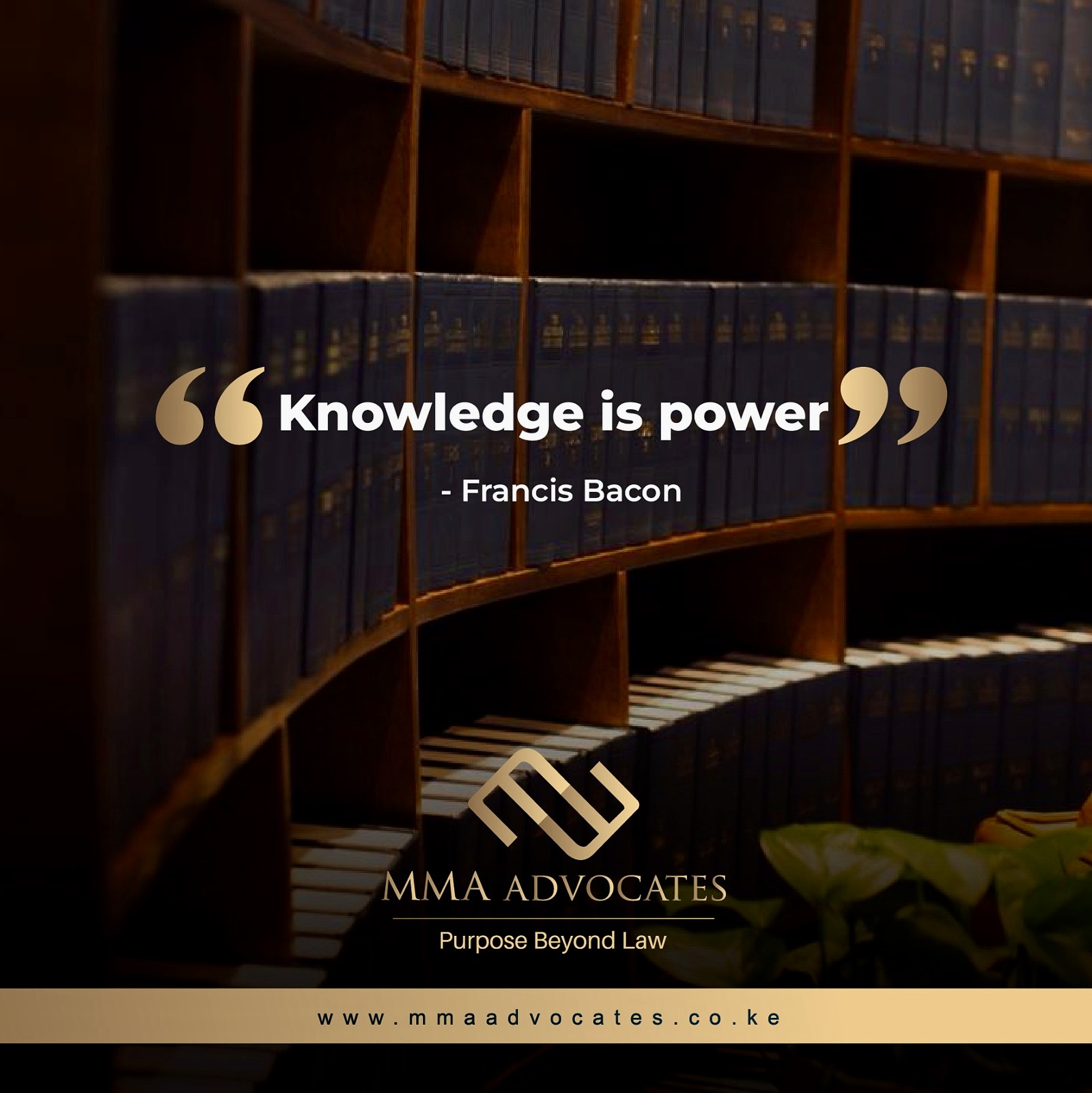



 Lawyers1 year ago
Lawyers1 year ago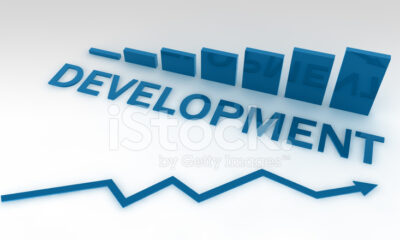
 News & Analysis3 years ago
News & Analysis3 years ago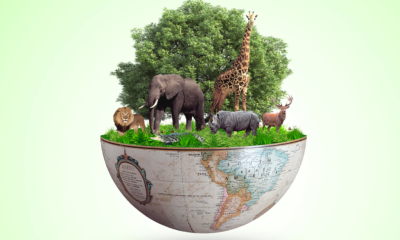
 News & Analysis3 years ago
News & Analysis3 years ago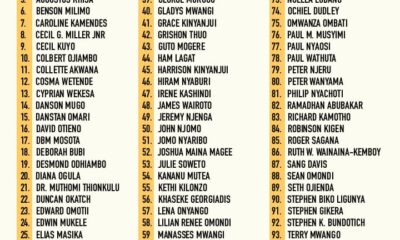
 Lawyers1 year ago
Lawyers1 year ago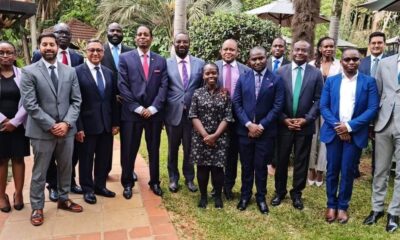
 News & Analysis2 years ago
News & Analysis2 years ago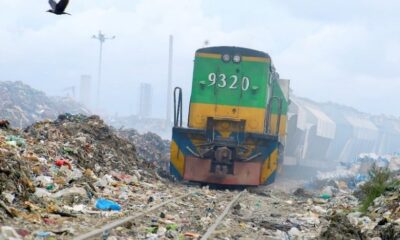
 News & Analysis1 year ago
News & Analysis1 year ago
 News & Analysis3 years ago
News & Analysis3 years ago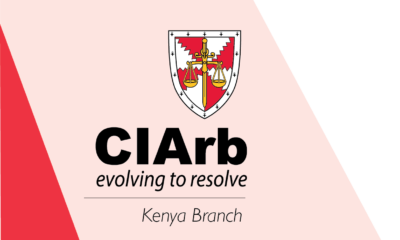
 News & Analysis1 year ago
News & Analysis1 year ago













